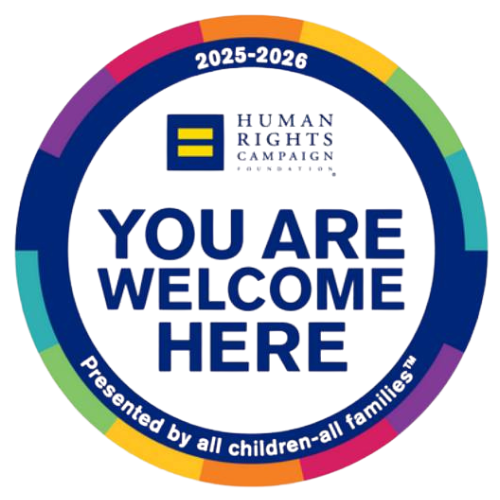In May 2011, Jonathan Litt joined Kids Matter Inc. as a law intern. Mr. Litt is currently pursing a law degree and plans to seek a graduate degree in community practice social work. Mr. Litt graduated from Michigan State University with bachelor’s degrees in International Relations and Psychology. Prior to law school, Mr. Litt worked as a youth advocate and research assistant in the Lansing, MI juvenile and truancy courts. Upon completion of his graduate studies, Mr. Litt aspires to join the frontline of child welfare and juvenile justice policy reform.
Introduction
It’s 4:00 a.m. in the middle of winter.
Carl lives in a group home.
Carl wakes up cold and hungry. It has been two days since the heat was shut off and the staff last fed Carl. Carl slips out of his bedroom window and begins to run. An hour later Carl reaches his destination: his auntie’s home across town. The police eventually locate Carl, arrest him, and place him in the detention center. The next morning Carl is returned to the group home without further inquiry.
Meanwhile, Martin lives in a group home. Martin slips out of his bedroom window and begins to run. Martin reaches his auntie’s home, where the police find him and place him into the back seat of a cruiser. As the cruiser pulls away from the driveway, the police officer strikes up a conversation with Martin.
Eventually, Martin confides to the police officer that for two days the group home’s heat has been shut off and the staff have not fed him. The police officer turns the cruiser around and begins to drive Martin back to his auntie’s home.
Fast forward a few months. Carl still lives in the same group home and has been in and out of detention. Martin has been reunified with his family.
Carl is Black. Martin is white.
Racial Phenomena in Child Welfare
- In 2008, Black children made up 14 percent of the nation’s child population but accounted for 31 percent of children in foster care. (1)
- Families and children of color in child welfare receive fewer and lower quality services (e.g., foster parent support, mental health, drug treatment) and experience higher placement in detention or correctional facilities. (2)
- White children are four times more likely to be reunified with their families than Black children. (3)
- Children of color are about twice as likely to be placed with kin. (4)
- Black women are more likely than white women to be reported for child abuse when their newborns test positive for drug use. (5)
- Maltreatment reports to CPS hotlines for families and children of color were more likely to be substantiated than reports for white families and children. (6)
How are child welfare racial phenomena explained?
There are two categories of racial phenomena in child welfare: disproportionality and disparity. Two theories attempt to explain these racial phenomena. Although both theories share the goal of racial equity, there is a fundamental disagreement on how to achieve racial equity.
Biased Decision-Making Theory
Some argue that racial disproportionality occurs due to the aggregation of discriminatory practices and policies. These theorists believe that children of color do not experience maltreatment at different rates than whites but are disproportionally represented at key decision-making stages such as investigation and removal. They argue that reform efforts should focus on the decision-making process to reduce entry and accelerate exits of families and children of color from the child welfare system.
Risk Factors Theory
Some theorists believe that biased decision-making is not the primary cause of racial disproportionality. Instead, these theorists believe that racial disproportionality reflects differential maltreatment rates among races largely linked to the disproportional rates of child maltreatment risk factors. A parent of color is “neither inherently more likely to abuse or neglect their children nor inherently more likely to be associated with risk factors.” (7)
Rather, the population of families and children of color experience child maltreatment risk factors such as poverty, unemployment, single parenting, substance abuse, and living in an impoverished community at disproportionally higher rates than white families and children. (8) These theorists advocate for reform efforts focusing on prevention programs and targeting specific disparate practices and policies. These theorists believe that if reform efforts are only directed at reducing the number of families and children of color in child welfare, then children of color will continue to be disproportionally at-risk for child maltreatment.
What recent developments are shaping reform?
In the 1980s and 1990s, the congressionally mandated National Incidence Study of Child Abuse and Neglect (NIS-2 & NIS-3) studies reported that differences among maltreatment rates between races were statistically insignificant. (9) The NIS-3 findings indicated that “different races receive[d] differential attention somewhere during the process of referral, investigation, and service allocation.” (10) Biased Decision-Making theorists used these studies to support their reform efforts because the findings suggest bias exists at key decision-making stages.
Disproportionality is the percentage of a group’s population within a system relative to the percentage of a group’s population within the general population (i.e. over- or underrepresentation).
Disparity is the unequal treatment of a minority population relative to a majority population within a system (i.e. discrimination).
Racial Equity is, in the context of child welfare, achieved when reporting, investigation, removal, permanency, and access and quality of child welfare services are not predicted by race or ethnicity.
In March 2010, the NIS-4 study found African American children experience maltreatment at higher rates than white children. (11) The authors explain that NIS-4 found the statistically significant racial difference for two reasons: (1) “the incomes of Black families have not kept pace with the incomes of white families” since the NIS-3 and (2) the NIS-4 had larger samples. (12) The authors cautioned that the NIS-4 measure for socioeconomic status “was less than ideal.”(13) The authors reported that “the NIS-4 sampled more counties and more CPS and sentinel agencies than the NIS-3 and collected considerably more data forms.”(14) These findings have impacted the discussion on racial equity theory and reform.
In January 2011, many national child welfare leaders attended the Race & Child Welfare: Re-Assessing the Facts, Re-Thinking the Policy Options conference co-sponsored by Harvard Law School’s Child Advocacy Program and Chapin Hall at the University of Chicago. During the conference, evidence was presented showing that previous NIS studies were insufficiently precise to show a statistically significant difference among maltreatment rates between races.(15)
Additionally, empirical research was “presented indicating that Black children suffer worse outcomes from maltreatment (e.g., higher rates of death following child abuse, higher rates of death following traumatic brain injury, and higher rates of mortality among those referred to child welfare).”(16) Some conference attendees concluded that “bias may well exist in pockets of the system, operating in ways that lead Black children to be either over- or underserved,” but there is “no evidence that initiatives that emphasize reducing the high representation of Black children will provide a path to more equitable services.”(17) Although these recent studies provide substantial evidence supporting Risk Factor Theory, child welfare professionals disagree on how to address risk factors. This disagreement will be further explored in Part II of this series.
Racial Disproportionality in Wisconsin’s Child Welfare
- In 2008, African American children represented 8% of children in Wisconsin but 54% of children in foster care. (18)
- Consistent with national trends, African American children were disproportionally represented at the investigation and removal stages. (19)
- Relative to other states, racial disproportionality in Wisconsin’s child welfare system ranked second highest for African American children and 12th highest for American Indian children. (20)
How has Wisconsin begun to address racial disproportionality in its child welfare system?
In 2010, the Wisconsin Department of Children and Families (DCF) Secretary’s Advisory Council on Child Welfare established a racial disproportionality subcommittee to inform the Council on racial phenomena in Wisconsin’s child welfare system so that the Council could offer recommendations to DCF. Council members include representatives from key Wisconsin child welfare service providers, government agencies, and non-profits. During the past year, racial disproportionality subcommittee members reviewed research and presented their recommendations to the Council.
Subsequently, the Council has advised DCF to focus on developing prevention and early intervention programming to address risk factors. Moreover, the Council recommended establishing commitment from public and private sector leadership and fostering community partnerships and regional workshops with child welfare professionals. In addition, the Council has initiated further data analysis regarding county level disproportionality and ethnic disproportionality.
Conclusion
Two categories of racial phenomena exist in the child welfare system: 1. disproportionality and 2. disparity. Research has overwhelmingly shown that children of color are disproportionally represented in the child welfare system. (21) Recent studies have shown that racial disproportionality may reflect different maltreatment rates among races because families and children of color experience maltreatment risk factors disproportionally. Other studies have shown evidence of discrete racial disparities in child welfare. As a result, families and children of color experience the child welfare system differently than whites.
These racial phenomena provide a starting point for child welfare racial equity reform. However, child welfare reform is not sufficient to overcome community-level maltreatment risk factors (22) such as high concentrations of poverty, crime rates, and female-headed households. (23) Therefore, racial equity reform in child welfare requires a broad look at child welfare’s impact on the community level.
Part II of this series will explore the role of communities in child maltreatment and the relationship between racial phenomena and communities in child welfare. Part III will identify promising practices to achieve racial equity in child welfare.
References
1 Child Welfare Information Gateway, Addressing Racial Disproportionality in Child Welfare, U.S. Dept. of Health & Human Services, Children’s Bureau, 3 (Jan. 2011), available at https://www.ojp.gov/ncjrs/virtual-library/abstracts/addressing-racial-disproportionality-child-welfare-child-welfare.
2 Robert B. Hill, Synthesis of Research on Disproportionality in Child Welfare: An Update, Casey-CSSP Alliance for Racial Equity in the Child Welfare System, 28 (October 2006), available online.
3 Hill, supra note 2, at 24.
4 Hill, supra note 2, at 29.
5 Hill, supra note 2, at 18.
6 Hill, supra note 2, at 21.
7 Elizabeth Bartholet, The Racial Disproportionality Movement in Child Welfare: False Facts and Dangerous Directions, 51 Ariz. L. Rev. 871, 877 (2009).
8 Id. at 900.
9 Elizabeth Bartholet, Fred Wulczyn, Richard P. Barth, Cindy Lederman, Race and Child Welfare, Chapin Hall University of Chicago, 3 (2011).
10 Bartholet et al., supra note 9,(quoting Andrea J. Sedlak and Diane D. Broadhurst, Executive Summary of the Third National Incidence Study of Child Abuse and Neglect, Westat prepared for for U.S. Dept. of Health & Human Services.
11 Andrea J. Sedlak, Karla McPherson, & Barnali Das, Fourth National Incidence Study of Child Abuse & Neglect (NIS-4): Executive Summary of Supplementary Analyses of Race Differences in Child Maltreatment Rates in the NIS-4, Westat prepared for U.S. Dept. of Health & Human Services, 1 (March 2010), available at https://www.acf.hhs.gov/sites/default/files/documents/opre/nis4_supp_analysis_race_diff_mar2010.pdf.
12 Sedlak et al., supra note 11, at 1, 4.
13 Sedlak et al., supra note 11, at 2.
14 Sedlak et al., supra note 11, at 5.
15 Bartholet et al., supra note 9.
16 Bartholet et al., supra note 9.
17 Bartholet et al., supra note 9, at 4.
18Alison Bowman, Laura Hofer, Collin O’Rourke, & Lindsay Read, Racial Disproportionality in Wisconsin’s Child Welfare System, University of Wisconsin La Follete School of Public Affairs prepared for WI Dept. of Children & Families, xi (May 12, 2009), available at http://digital.library.wisc.edu/1793/36539.
19 Bowman et al., supra note 17, at 1.
20 Bowman et al., supra note 17, at 1.
21 Hill, supra note 2.
22 Dorothy E. Roberts, The Community Dimension of State Child Protection, 34 Hofstra L. Rev. 23, 28 (2005).
23 Hill, supra note 2,at 26.






